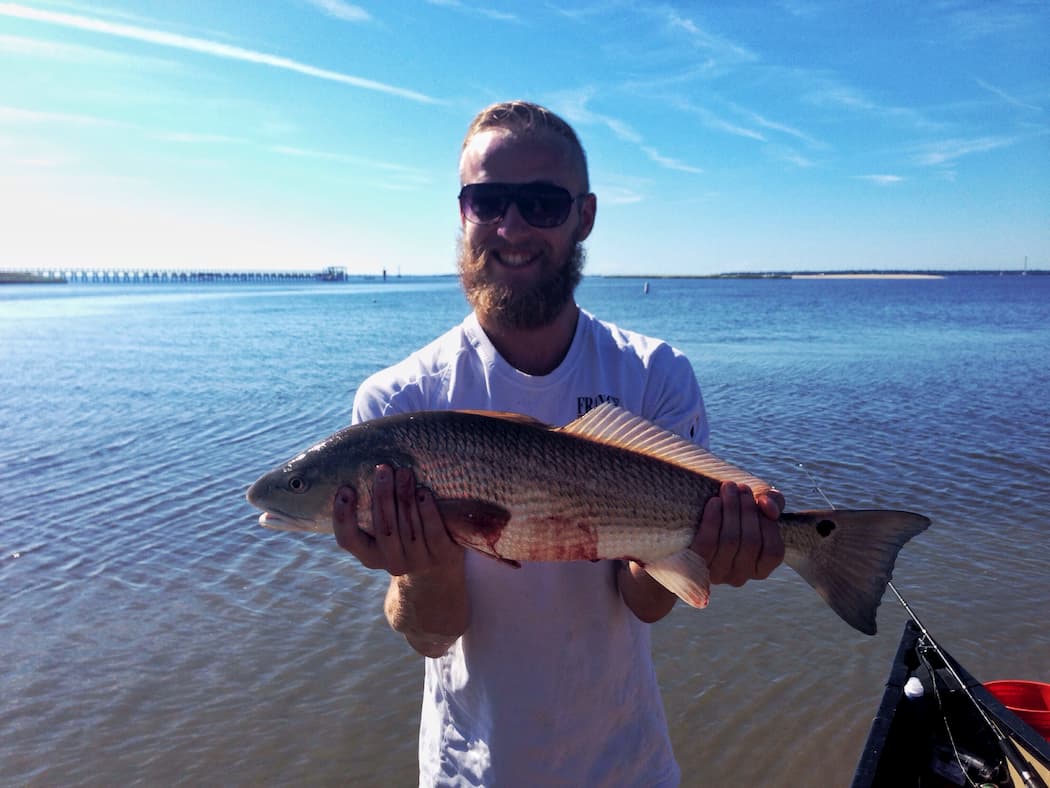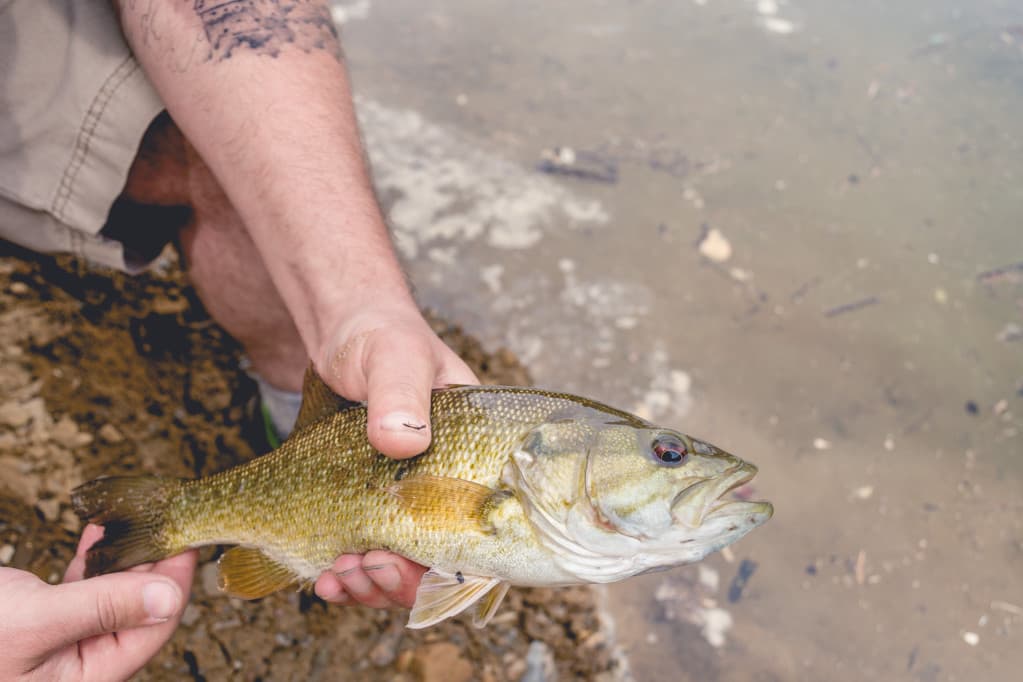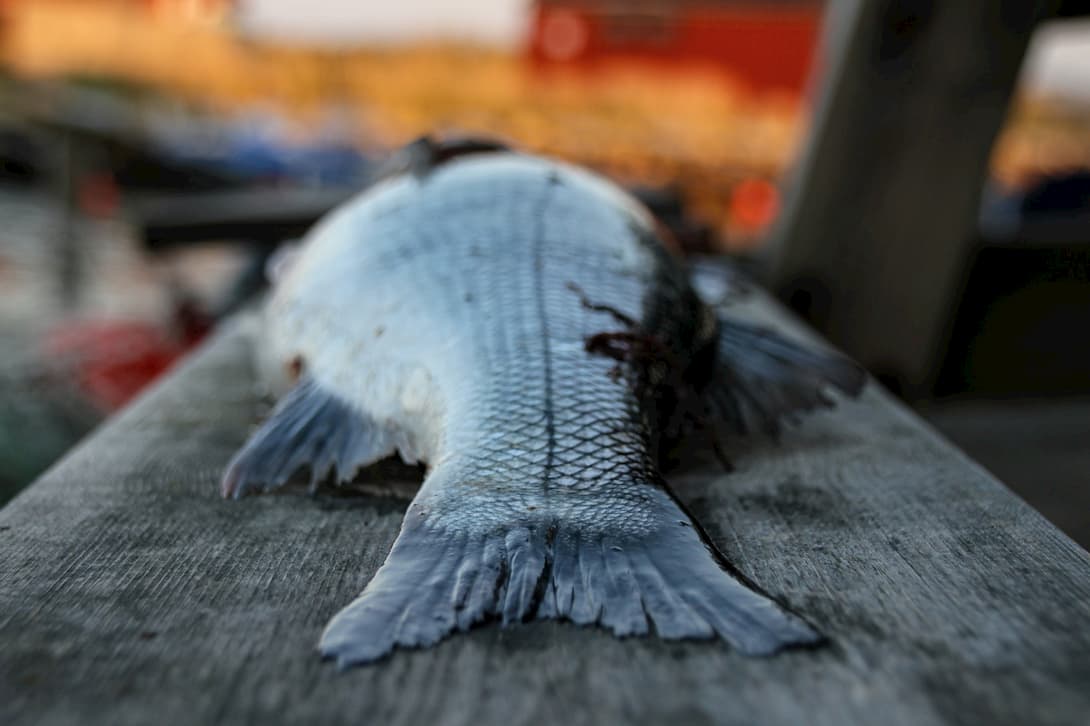A Comprehensive Guide for Selecting the Best Fishing Hook
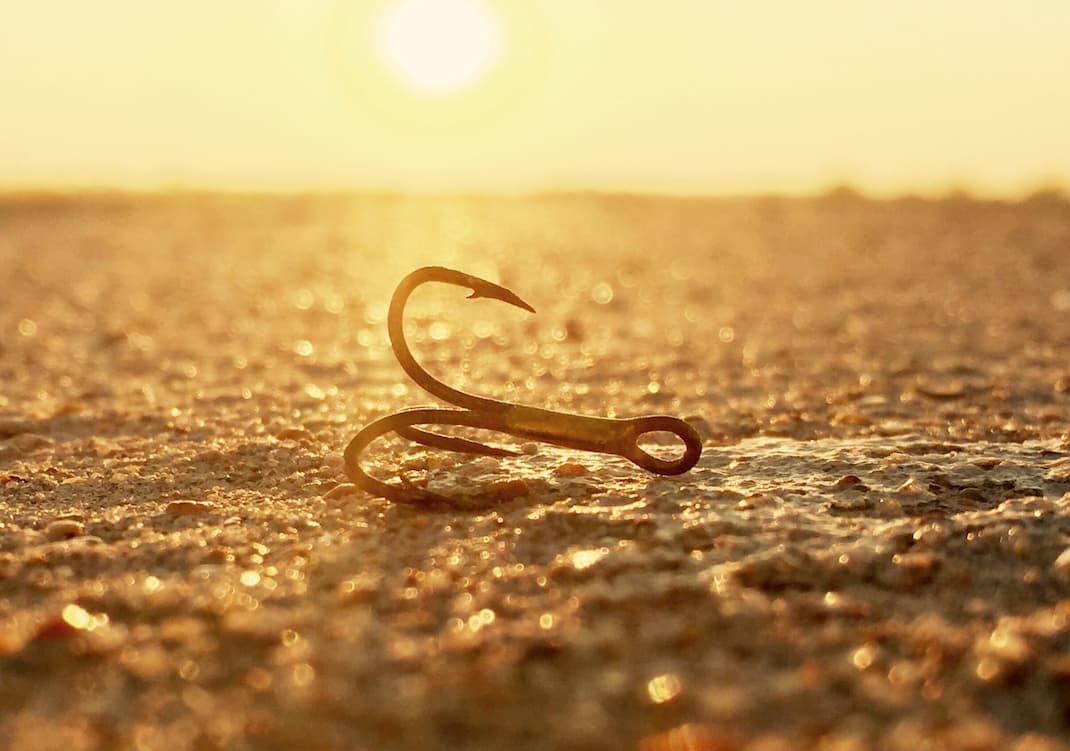
Fishing hooks have been used by people throughout known history. In times past, hooks were produced from natural materials such as stone, bone, or wood. However, manufacturers today make hooks from steel.
Manufacturers make hooks that vary by model, shape, and size. Such variations make the journey to selecting the best hook challenging even for the experienced anglers. Thus, it is imperative to have the necessary information before deciding on the best hook to acquire.
In this post, we’ll walk through some of the basic and essential information to get you starting in choosing the right fishing hook.
The overall structure
Fishing hooks are usually made in distinct styles, shapes, and sizes, but all will have a similar basic structure. Every hook is composed of the following:
- Point: The sharp tip of the hook which enters into the fish’s mouth.
- Eye: The section where you join a hook to a line or lure.
- Barb: A protrusion that spreads backward originating from the point ensuring the fish does not easily unhook.
- Bend: The curved section of the hook.
- Shank: This links the bend and the eye.
- Gap: The space between the point and the shank.
Hooks vary in style and shape because they are designed for a specific purpose.
For instance, a hook with a long shank will be ideal for thin baits like worms.
A hook with a big gap will allow you to utilize larger baits to attract larger fish.
The following are the vital factors to reflect on when choosing the right fishing hook:
Size of the fishing hook
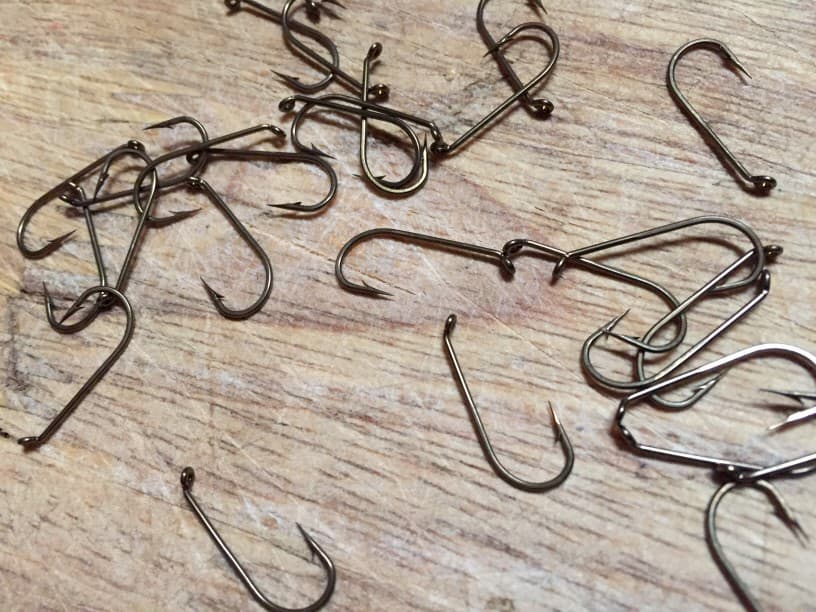
The size of your fishing hook will in large part depend on two things – the size of your bait, and the size of your target fish.
For example, a hook with a smaller gap will be appropriate when fishing for bream using a small worn, whereas you’ll want to select a larger hook (with a larger gap) if you intend to use soft plastic baits like flukes, or swimbaits when fishing for bass.
Hook sizing can be slightly confusing at first, with smaller hooks having a larger number until a certain point when the system reverses itself. To make matters worse, there’s not an industry standard, so hooks labeled the same size can vary slightly between manufacturer.
Keeping that in mind, in the same brand a size 10 hook is smaller than a size 9 hook, which is smaller than a size 8, and so on until size 1. At this point, larger hooks ascend in size and are designated with a number followed by a 0. For example, 1/0 (One aught or One “O”), is smaller than 2/0, etc.
Hook Eye
Selecting hooks with an appropriate eye will improve your rate of catch significantly. The hook eye gets its identity from the shape. For instance, the eye can be oval or circular. The following are some of the popular eye shapes:
Needle Eye: Looks like the open side of a sewing needle. It is smaller as compared to the other eye varieties. This feature makes it convenient to hide the hook in plastic or live bait.
Looped Eye: Circular in appearance. The eye spreads along the hook’s shank as it aligns with the bend.
Tapered Eye: More oval in appearance. Though looking similar to the looped eye, the end of the loop tapers down as it meets the top of the shank. Such types of hooks are ideal for use with dried flies.
Brazed Eye: The eye is closed using a process similar to a weld. This helps ensure a fish does not bend or break the hood during a fight. As such, these are suitable for catching larger fish.
Hook Thickness
Manufacturers produce hooks with different thicknesses.
For instance, you require a light or standard constitution if you intend to fish bass. Hooks made of light wire are suitable for use fishing finesse when utilizing a slim line.
Besides, the standard wires are ideal for use in heavy-duty situations such as pitching and flipping into thicker cover.
Hooks will also come in varying finishes.
While the majority of hooks come with a basic bronze finish, other popular finishes include gold, red, blue nickel & black and black chrome. To enhance penetration, manufacturers may also apply Teflon (or similar) coatings.
Sharpness
While hooks can be sharpened (and will need to be throughout their lifetime), generally newly purchased hooks should be sharp and ready to go immediately.
One quick way to tell if a hook is sharp enough is to drag it across your fingernail – a sharp hook will catch, a dull one will slide. If you find your hooks getting dull, you can sharpen them using a file.
Specialty sharpeners exist with a groove for making the process easier.
Keep in mind that the sharpening process removes metal and will weaken the hook over time.
Material and Durability
Fishing hooks are not designed to last forever, but they still must be produced from durable materials and properly treated for their intended environment.
You will find hooks in both high-carbon and stainless steel.
High-carbon steel hooks tend to be stronger but will rust more easily, while stainless steel hooks will tend to dull faster (but are generally easier to sharpen).
Hooks can also be coated for increased corrosion resistance or in materials that provide a reflective sheen which helps in attracting a fish.
Many anglers will prefer a coated, high-carbon steel hook for its strength and also the well-being of the fish – if the hook does break off, the fish will have a better chance of getting rid of the hook as it rusts over time.
Hook Points
Another crucial factor to consider is the point of the hook itself.
That sharp tip is typically created through a process of either cutting, compressing, or grinding.
Below are some of the popular hook point types:
Spear points: These might be the most commonly used hook point. The tip comes up directly from the bend, reducing the level of damage to your fish. These are usually easier to sharpen than other models.
Needle point: On these, the tip tapers a bit toward the shank. The hooks are designed to ensure the least damages and facilitate swift penetration. These make small holes and help to prevent the fish from coming off the hook.
Rolled-in point: When pursuing fish with a lot of fight, you may want to consider a rolled-in point. This tip faces the eye of the hook. This will help when setting the hook and keeping the fish on the line while they are whipping around.
Hollow point: From the hook tip down to the barb the point is bent-in toward the shank creating a hollowed-out look. More suitable for soft-mouthed fish, the hook will penetrate easily and stay in place.
Knife-edge point: These are sharp and will enter a fish quickly but can also cause the most damage to the fish (out of the other options mentioned). You can recognize these as they are sharp on both sides that point away from a shank.
Target Species
Not all fishing hooks will work equally well between fish species.
It’s important to know which type of fish you will be pursuing, the types of bait they prefer, and the best type of hook to use to maximize your chance of landing your catch.
Location and Conditions
In addition to knowing the type of fish you’re after, knowing your location, type of water, and the forecast can also be pivotal to success (as anyone who has spent a day getting snagged on underwater debris or only reeled in weeds can tell you!).
For example, some hooks are designed specifically for fishing in saltwater, while others when fishing in freshwater.
Hooks meant for saltwater come with a coating to increase their corrosion resistance which also will make them stronger and more durable.
Fishing hooks designed for use in freshwater may still have a coating for protection and/or to increase the hook’s visual appeal to a particular species.
The popular types of Hooks
J-Hooks
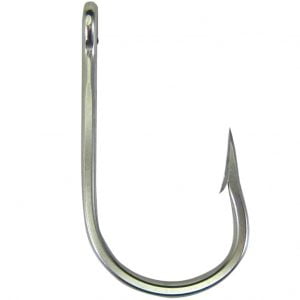
As the name indicates, this hook looks like the letter “J,” and it comes with a straight shank. When a fish bites this hook, it can attach to any part of the mouth.
You will have to set this style of hook (setting a hook involves a rapid sweeping motion with the rod once the fish has taken the bait. This ensures the hook properly catches in the mouth).
Circle Hooks
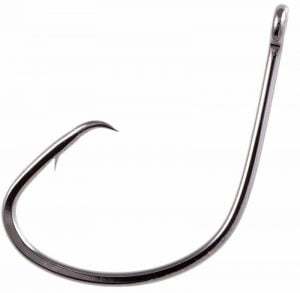
These hooks curve back on themselves and have become more popular recently as they greatly reduce the chance of getting swallowed and killing the fish (especially in catch-and-release scenarios).
Setting the hook is not necessary.
Kahle Hooks
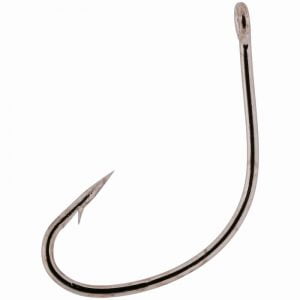
These are also known as shiner hooks or “K” hooks. In such hooks, the point faces the eye instead of pointing towards the hook’s shank (like a circle hook does). These are common in a bass fishing.
These hooks can be set like J-Hooks but will sometimes set themselves depending on how the fish takes it.
Weedless Hooks
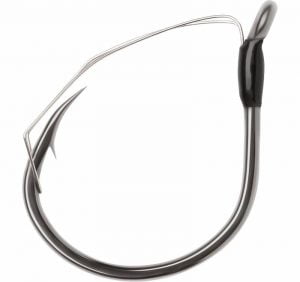
These hooks feature a small piece of protective wire that runs from the eye to just below the tip. This helps to keep small debris and vegetation from snagging on your hook.
The wire is connected at the eye and is held against the tip with only light pressure so it doesn’t interfere with catching the fish.
Treble Hooks
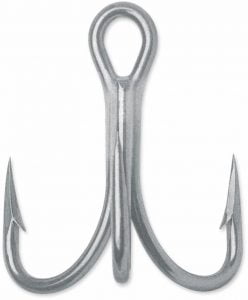
Octopus Hooks
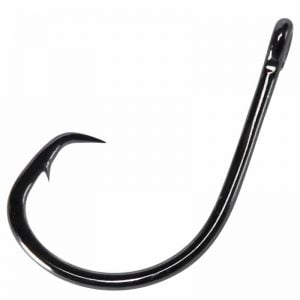
Mainly used for live or cut bait and requires you to set the hook. These have a rounded shank and the tip bends in, but not as far as a circle hook does.
Conclusion
Hopefully, this article has provided you with some helpful information on making a more informed decision when choosing a fishing hook.
Size, style, target species, and the other factors mentioned here will all play a role in making the best selection for your specific situation.
You Might Also Like

Tips For Catching Bass – Boathouses and Docks
Tried all of your normal bass fishing holes and still coming back empty handed? Check out these known, but often forgotten bass fishing gems!
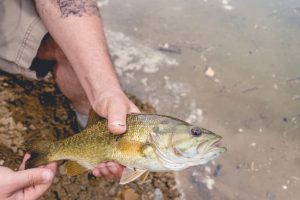
13 Best Trout Fishing Lures | How To Catch More Trout
Going trout fishing? Learn the tricks to catching more trout on your next outing and the lures that you need whether your fishing for trout in rivers, lakes, or streams.
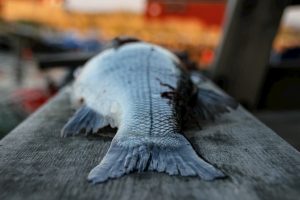
How To Fillet A Fish | Expert Guide To Preparing Your Catch For Dinner
We enjoy fishing, the activity itself is fun and relaxing. You know something else that’s fun and relaxing? Eating good food! Learn some great tips on filleting the fish you catch so that you can turn fishing fun into eating fun!

Best Fishing Backpack – Top 9 Tackle Box Backpacks in 2022
You can’t really go fishing without a tackle box, but we both know that they’re annoying to carry around. Instead of having to haul around a bulky plastic box, incorporate all of your fishing gear into one awesome fishing backpack. Check out our list of the top 9 fishing backpacks for sale today!

